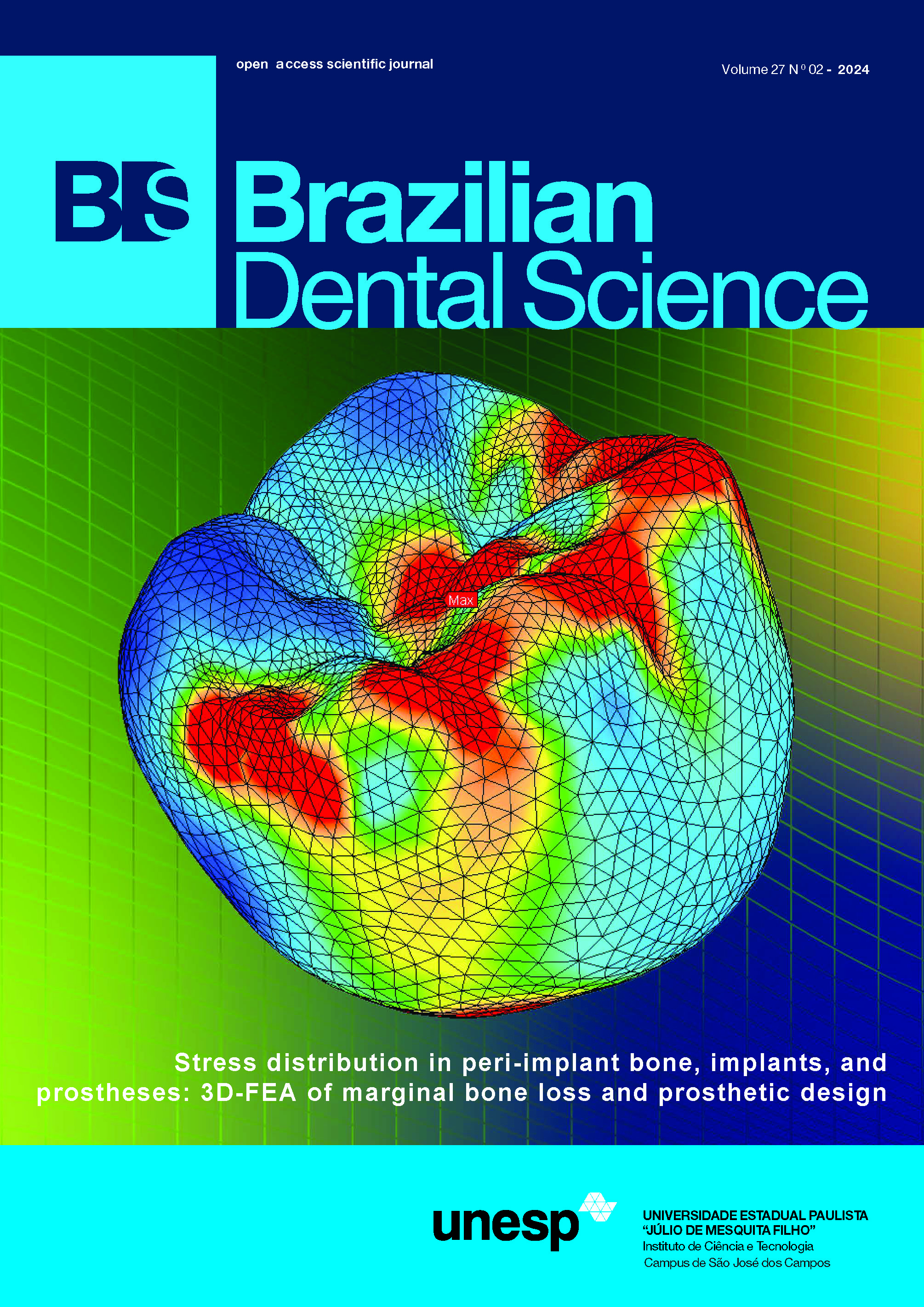Impact of plasticization temperature on the mechanical properties of sports mouthguards
DOI:
https://doi.org/10.4322/bds.2024.e4357Abstract
Objective: Mouthguards can reduce or even prevent orofacial injuries. These devices are responsible for absorbing part of the energy of an impact force, while the remaining part is dissipated. The present study aimed to evaluate how the plasticization temperature of the sports mouthguards’ manufacturing process influences their mechanical properties and protective potential. Material and Methods: Specimens were made according to different plasticization temperatures (85°C, 103°C, 121°C and 128°C) and different dental brands of EVA sheets (Bio-art and FGM). Plasticization temperatures were measured using a culinary thermometer (Term; TP300). The mechanical properties evaluated were: energy absorption capacity, deformation, and modulus of elasticity. Compression testing was carried out in the Emic universal testing machine with a speed of 600 mm/min to simulate a punch. Results: EVA sheets submitted to the highest temperatures (121°C and 128°C) had their energy absorption capacity reduced. In addition, the samples that plasticized at the lowest temperature (85°C) showed higher absorption capacity, lower elastic modulus, and less variation in its dimensions. It proved to be the most effective in protection and with greater durability. Conclusion: The plasticization temperature proved to be an influential factor in the absorption capacity of mouthguards, so the increase in temperature led to a reduction in this property, especially when higher than 120°C. In addition, the plasticization temperature may vary depending on the sheet brand used. Finally, the kitchen thermometer used proved to be efficient and practical, thanks to its easy-to-read display and wide availability on the market.
KEYWORDS
Modulus of elasticity; Mouthguards; Physicochemical absorption; Polyethylene vinyl acetate; Temperature.
Downloads
Published
How to Cite
Issue
Section
License
Brazilian Dental Science uses the Creative Commons (CC-BY 4.0) license, thus preserving the integrity of articles in an open access environment. The journal allows the author to retain publishing rights without restrictions.
=================




























